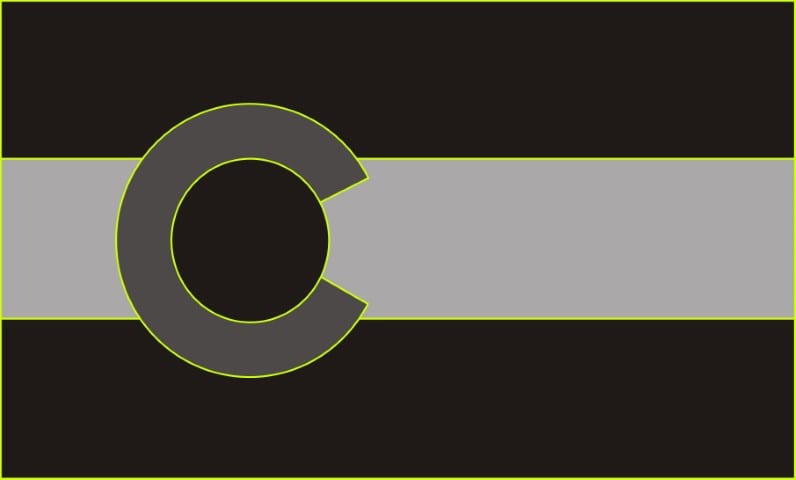

We are Attorneys and We are Riders
We Represent Colorado Cyclists
Had a Bicycle Crash in Colorado?
Contact Ben Dodge to see if the bicycle crash lawyers at Bike Accident Attorneys (BAA) can help. Unlike other lawyers who attempt to represent cyclists, our BAA lawyers actually ride and race their bicycles as well as appear and win in court. Most attorneys are just pencil pushers. We are court room litigators who are passionate about riding our bikes and we have associated local counsel in other states to allow us to help you in your state. Based on our expertise and experience we have also been admitted in other states to appear in court for our bicycle crash clients on a case by case basis. We can help you directly or ensure that you get the quality help you need in your state. Contact Ben Dodge now to see how we can protect your rights.
3 Tips on Choosing the Best Bicycle Crash Lawyer and Avoid Being Scammed
So how do you know if you have the best lawyer? There are 3 things to investigate when hiring a bicycle lawyer that can help you avoid a scammer. Some of that depends on what you think the “best” really means. To me, it is simple. The “best” lawyer will get you to the most advantageous position possible with as little cost as possible. That’s it. Nothing else to it. I have seen too many lawyers give up or miss out on incredible opportunities for their clients because of their own egos arguing the irrelevant issues or pushing too hard in a direction that only generates their own fees as opposed to the results the client would rather have.
The most advantageous position is sometimes not even what the client comes in asking for. I can’t tell you how many times I probably talked myself out of a job in an initial consult because what the client wanted actually puts them in a worse position and I wasn’t afraid to tell them so. It would have been so much easier to just tell them what they desperately wanted to hear, help them feel heard and let them vent a little. All just tell them we better hurry up and rush to court so they can be vindicated. When in reality, that won’t help them at all. So that is what many lawyers do- they try to figure out what the client wants emotionally and then sell them a legal service that matches that emotional need and of course charge them for it based on whatever they think the client is able to pay.
Obviously not all attorneys are this cold-hearted. Many of us actually care. Many of us strive to do right by the client as opposed to just trying to do right by the pocket book.
Here are some general things to watch out for when looking for an attorney, especially a bicycle accident lawyer (I don’t like the word accident, I prefer “crash” – but most of the world uses the term accident and I understand why, so I sue it too). Here are the issues to watch out for:
1) Specific Knowledge
Do they have the specific knowledge required to handle your case? Just because they graduated from law school doesn’t mean they know anything about cycling! In fact, in my opinion, most of the country doesn’t know anything about cycling. It is crazy that all sorts of professionals from police offices charged with enforcing cycling safety to insurance adjusters responsible for finding fault don’t know anything about cycling laws. This is especially true with local rules, ordinances, and even more so with knowledge of local customs and implied expectations of cycling culture and more. Now fast forward to the moment when you are looking for an attorney to help you with your crash (your bicycle accident case) and you see a billboard on the side of the freeway, or a TV commercial, or even a Google search where the words cycling lawyer were used… How much specific knowledge of bicycle cases do you think they really have? Ask them how often they ride? Ask them what their favorite route is? Ask them if they could buy any bike on the planet what would it be and why? These questions will help you quickly identify if they are even remotely plugged into the cycling community and whether or not they have specific knowledge relating to cycling. Why is this important? SIMPLE- as a cyclist you already know that most people (drivers) hate that we are out on the roads. You already have an uphill court battle of public opinion. Being right on some traffic issue isn’t enough for us. Your lawyer must know this intimately in order to successfully navigate the complex negotiations of your case with the insurance company and opposing attorneys and then ultimately in a court room where you can bet no one on the jury will be a cyclist.
Also on the topic of specific knowledge. How many cases like this issue have they handled? What were the outcomes? How confident do you feel with their answers to these questions? Specific case knowledge is helpful. Do they have experience with the opposing insurance company? With that specific police department? With your judge? And on and on.
Specific knowledge is very helpful and you can’t buy it with expensive marketing on billboards, commercials, etc. It is earned with blood, sweat, and sometimes tears through years of experience.
2) Desk or Courtroom
The next thing to investigate is whether or not the attorney you’re thinking about hiring is a desk lawyer (I fondly refer to these lawyers as pencil pushers) or a courtroom lawyer. There is a need for all sorts of lawyers. But unless you are planning on having your bicycle accident attorney draft a will or some contract for you, then you want a courtroom lawyer not a pencil pusher.
I know this is a guess, but in my experience it seems like 95% of lawyers, especially the ones who end up on billboards and commercials, are just pencil pushers. Once their cases get to tough they refer them out to a real lawyer to finish the courtroom stuff for them. Most attorneys talk a big talk in their consult with potential clients about how good they are, but when push comes to shove and they have to actually prove it to you in a courtroom with you watching, their peers (opposing lawyers on the other side of your case) and in front of a judge and jury- they simply freak out and completely drop the ball or settle for less than you should ever take just to avoid the scary courtroom.
Don’t mistakenly hire a pencil pusher. Hire a bicycle accident lawyer who thrives in the courtroom. One simple question to help catch them off guard is ask them when is the last time they were in court? What was it about? What kind of hearing was it? What was the argument they proposed and made to the judge? How did it turn out? These simple questions will help you find out if they are pencil pushers or not. Their hesitation or odd answers are a dead give away that they are likely misleading you on their courtroom abilities and experience.
We are courtroom lawyers, sometimes even going multiple times per week to court. We file lawsuits, we don’t just write a few meaningless settlement letters and sell our clients on how good the settlement is- we prove it to our clients.
3) Do You Recognize Them from a Billboard or Commercial?
Yes I said that right, do you actually recognize them from a billboard or a TV commercial? Why is this even a thing? Well, it sounds harsh but those lawyers out there spending hundreds of thousands of dollars per year (for some they spend that per month) just to recruit new clients may be struggling to get their current and past clients to even refer to them… Yep, what if your lawyer was so good and you were so impressed that you happily sent business to him/or her? See how powerful that is? I’m not saying that everyone who advertises in our line of work is a horrible lawyer. What I am saying is that it is a bit suspect since advertising is NOT cheap and it begs the question as to why they have to advertise in the first place? Is their reputation with their own clients so bad that they have to find an alternative source to finding clients? Possibly. I’m one of those guys who avoids, in fact runs away from any professional I see on a billboard. I’d much rather consult a trusted friend and get their opinion as to whom I should see or NOT see based on their experience.
Not all lawyers who advertise are bad. But like I said, I personally run away from any professional on a billboard or TV commercial. A good old fashioned referral has always proved to be much better much more often. Just sayin’.

These are just 3 of the many things to look out for when you hire a bicycle accident lawyer. Call my office up and we can chat over the phone sometime about all the other million things to look out for like attorney billable hour quotas, bonus structures, professional reputation among peers, and so much more!
We are here for you. We got your back. We protect our own like you’re a member of our tribe. Good luck. Be safe out there and keep the rubber side down.
Contact Ben Dodge and let the lawyers in the Bike Accident Attorneys National Network help you. We will assist you in your case and/or find someone for you in your state that we can trust and recommend. We have your back. We are here for you.
#MyLawyerDoesntSuck


Need a Consultation?

Colorado Bicycle Accident Statistics
Resident Population
5,541,000
Total Traffic Fatalities
608
Pedalcyclist Fatalities
16
Percentage of Total Traffic Fatalities
2.6%
Pedalcyclist Fatalities per Million Population
2.89
Colorado Bicycle Statutes
§ 42-4-1412. Operation of bicycles and other human-powered vehicles
- Every person riding a bicycle or electrical assisted bicycle shall have all of the rights and duties applicable to the driver of any other vehicle under this article, except as to special regulations in this article and except as to those provisions which by their nature can have no application. Said riders shall comply with the rules set forth in this section and section 42-4-221, and, when using streets and highways within incorporated cities and towns, shall be subject to local ordinances regulating the operation of bicycles and electrical assisted bicycles as provided in section 42-4-111.
- It is the intent of the general assembly that nothing contained in House Bill No. 1246, enacted at the second regular session of the fifty-sixth general assembly, shall in any way be construed to modify or increase the duty of the department of transportation or any political subdivision to sign or maintain highways or sidewalks or to affect or increase the liability of the state of Colorado or any political subdivision under the “Colorado Governmental Immunity Act”, article 10 of title 24, C.R.S.
- No bicycle or electrical assisted bicycle shall be used to carry more persons at one time than the number for which it is designed or equipped.
- No person riding upon any bicycle or electrical assisted bicycle shall attach the same or himself or herself to any motor vehicle upon a roadway.
- Any person operating a bicycle or an electrical assisted bicycle upon a roadway at less than the normal speed of traffic shall ride in the right-hand lane, subject to the following conditions:
- If the right-hand lane then available for traffic is wide enough to be safely shared with overtaking vehicles, a bicyclist shall ride far enough to the right as judged safe by the bicyclist to facilitate the movement of such overtaking vehicles unless other conditions make it unsafe to do so
- A bicyclist may use a lane other than the right-hand lane when:
- Preparing for a left turn at an intersection or into a private roadway or driveway;
- Overtaking a slower vehicle; or
- Taking reasonably necessary precautions to avoid hazards or road conditions.
- Upon approaching an intersection where right turns are permitted and there is a dedicated right-turn lane, a bicyclist may ride on the left-hand portion of the dedicated right-turn lane even if the bicyclist does not intend to turn right.
- A bicyclist shall not be expected or required to:
- Ride over or through hazards at the edge of a roadway, including but not limited to fixed or moving objects, parked or moving vehicles, bicycles, pedestrians, animals, surface hazards, or narrow lanes; or
- Ride without a reasonable safety margin on the right-hand side of the roadway.
- A person operating a bicycle or an electrical assisted bicycle upon a one-way roadway with two or more marked traffic lanes may ride as near to the left-hand curb or edge of such roadway as judged safe by the bicyclist, subject to the following conditions:
- If the left-hand lane then available for traffic is wide enough to be safely shared with overtaking vehicles, a bicyclist shall ride far enough to the left as judged safe by the bicyclist to facilitate the movement of such overtaking vehicles unless other conditions make it unsafe to do so.
- A bicyclist shall not be expected or required to:
- Ride over or through hazards at the edge of a roadway, including but not limited to fixed or moving objects, parked or moving vehicles, bicycles, pedestrians, animals, surface hazards, or narrow lanes; or
- Ride without a reasonable safety margin on the right-hand side of the roadway.
- Persons riding bicycles or electrical assisted bicycles upon a roadway shall not ride more than two abreast except on paths or parts of roadways set aside for the exclusive use of bicycles.
- Persons riding bicycles or electrical assisted bicycles two abreast shall not impede the normal and reasonable movement of traffic and, on a laned roadway, shall ride within a single lane.
- Any person operating a bicycle or an electrical assisted bicycle upon a roadway at less than the normal speed of traffic shall ride in the right-hand lane, subject to the following conditions:
- A person operating a bicycle or electrical assisted bicycle shall keep at least one hand on the handlebars at all times.
- A person riding a bicycle or electrical assisted bicycle intending to turn left shall follow a course described in sections 42-4-901(1), 42-4-903, and 42-4-1007 or may make a left turn in the manner prescribed in paragraph (b) of this subsection (8).
- A person riding a bicycle or electrical assisted bicycle intending to turn left shall approach the turn as closely as practicable to the right-hand curb or edge of the roadway. After proceeding across the intersecting roadway to the far corner of the curb or intersection of the roadway edges, the bicyclist shall stop, as much as practicable, out of the way of traffic. After stopping, the bicyclist shall yield to any traffic proceeding in either direction along the roadway that the bicyclist had been using. After yielding and complying with any official traffic control device or police officer regulating traffic on the highway along which the bicyclist intends to proceed, the bicyclist may proceed in the new direction.
- Notwithstanding the provisions of paragraphs (a) and (b) of this subsection (8), the transportation commission and local authorities in their respective jurisdictions may cause official traffic control devices to be placed on roadways and thereby require and direct that a specific course be traveled.
- Except as otherwise provided in this subsection (9), every person riding a bicycle or electrical assisted bicycle shall signal the intention to turn or stop in accordance with section 42-4-903; except that a person riding a bicycle or electrical assisted bicycle may signal a right turn with the right arm extended horizontally.
- A signal of intention to turn right or left when required shall be given continuously during not less than the last one hundred feet traveled by the bicycle or electrical assisted bicycle before turning and shall be given while the bicycle or electrical assisted bicycle is stopped waiting to turn. A signal by hand and arm need not be given continuously if the hand is needed in the control or operation of the bicycle or electrical assisted bicycle.
- A person riding a bicycle or electrical assisted bicycle upon and along a sidewalk or pathway or across a roadway upon and along a crosswalk shall yield the right-of-way to any pedestrian and shall give an audible signal before overtaking and passing such pedestrian. A person riding a bicycle in a crosswalk shall do so in a manner that is safe for pedestrians.
- A person shall not ride a bicycle or electrical assisted bicycle upon and along a sidewalk or pathway or across a roadway upon and along a crosswalk where such use of bicycles or electrical assisted bicycles is prohibited by official traffic control devices or local ordinances. A person riding a bicycle or electrical assisted bicycle shall dismount before entering any crosswalk where required by official traffic control devices or local ordinances.
- A person riding or walking a bicycle or electrical assisted bicycle upon and along a sidewalk or pathway or across a roadway upon and along a crosswalk shall have all the rights and duties applicable to a pedestrian under the same circumstances, including, but not limited to, the rights and duties granted and required by section 42-4-802.
- Deleted by Laws 2005, Ch. 301, § 1, eff. July 1, 2005.
- A person may park a bicycle or electrical assisted bicycle on a sidewalk unless prohibited or restricted by an official traffic control device or local ordinance.
- A bicycle or electrical assisted bicycle parked on a sidewalk shall not impede the normal and reasonable movement of pedestrian or other traffic.
- A bicycle or electrical assisted bicycle may be parked on the road at any angle to the curb or edge of the road at any location where parking is allowed.
- A bicycle or electrical assisted bicycle may be parked on the road abreast of another such bicycle or bicycles near the side of the road or any location where parking is allowed in such a manner as does not impede the normal and reasonable movement of traffic.
- In all other respects, bicycles or electrical assisted bicycles parked anywhere on a highway shall conform to the provisions of part 12 of this article regulating the parking of vehicles.
- Any person who violates any provision of this section commits a class 2 misdemeanor traffic offense; except that section 42-2-127 shall not apply.
- erson riding a bicycle or electrical assisted bicycle who violates any provision of this article other than this section which is applicable to such a vehicle and for which a penalty is specified shall be subject to the same specified penalty as any other vehicle; except that section 42-2-127 shall not apply.
- Upon request, the law enforcement agency having jurisdiction shall complete a report concerning an injury or death incident that involves a bicycle or electrical assisted bicycle on the roadways of the state, even if such accident does not involve a motor vehicle.
- Except as authorized by section 42-4-111, the rider of an electrical assisted bicycle shall not use the electrical motor on a bike or pedestrian path.
§ 42-4-1003. Overtaking a vehicle on the left
- The following rules shall govern the overtaking and passing of vehicles proceeding in the same direction, subject to the limitations, exceptions, and special rules stated in this section and sections 42-4-1004 to 42-4-1008:
- The driver of a vehicle overtaking another vehicle proceeding in the same direction shall pass to the left of the vehicle at a safe distance and shall not again drive to the right side of the roadway until safely clear of the overtaken vehicle
- The driver of a motor vehicle overtaking a bicyclist proceeding in the same direction shall allow the bicyclist at least a three-foot separation between the right side of the driver’s vehicle, including all mirrors or other projections, and the left side of the bicyclist at all times.
- Except when overtaking and passing on the right is permitted, the driver of an overtaken vehicle shall give way to the right in favor of the overtaking vehicle on audible signal and shall not increase the speed of the driver’s vehicle until completely passed by the overtaking vehicle.
- Any person who violates any provision of this section commits a class A traffic infraction.
§ 42-4-204. When lighted lamps are required
- Every vehicle upon a highway within this state, between sunset and sunrise and at any other time when, due to insufficient light or unfavorable atmospheric conditions, persons and vehicles on the highway are not clearly discernible at a distance of one thousand feet ahead, shall display lighted lamps and illuminating devices as required by this article for different classes of vehicles, subject to exceptions with respect to parked vehicles.
- Whenever requirement is declared by this article as to distance from which certain lamps and devices shall render objects visible or within which such lamps or devices shall be visible, said provisions shall apply during the times stated in subsection (1) of this section in respect to a vehicle without load when upon a straight, level, unlighted highway under normal atmospheric conditions, unless a different time or condition is expressly stated.
- Whenever requirement is declared by this article as to the mounted height of lamps or devices, it shall mean from the center of such lamp or device to the level ground upon which the vehicle stands when such vehicle is without a load.
- Any person who violates any provision of this section commits a class A traffic infraction.
§ 42-4-221. Bicycle and personal mobility device equipment
- No other provision of this part 2 and no provision of part 3 of this article shall apply to a bicycle, electrical assisted bicycle, or EPAMD or to equipment for use on a bicycle, electrical assisted bicycle, or EPAMD except those provisions in this article made specifically applicable to such a vehicle.
- Every bicycle, electrical assisted bicycle, or EPAMD in use at the times described in section 42-4-204 shall be equipped with a lamp on the front emitting a white light visible from a distance of at least five hundred feet to the front.
- Every bicycle, electrical assisted bicycle, or EPAMD shall be equipped with a red reflector of a type approved by the department, which shall be visible for six hundred feet to the rear when directly in front of lawful lower beams of head lamps on a motor vehicle.
- Every bicycle, electrical assisted bicycle, or EPAMD when in use at the times described in section 42-4-204 shall be equipped with reflective material of sufficient size and reflectivity to be visible from both sides for six hundred feet when directly in front of lawful lower beams of head lamps on a motor vehicle or, in lieu of such reflective material, with a lighted lamp visible from both sides from a distance of at least five hundred feet.
- A bicycle, electrical assisted bicycle, or EPAMD or its rider may be equipped with lights or reflectors in addition to those required by subsections (2) to (4) of this section.
- A bicycle or electrical assisted bicycle shall not be equipped with, nor shall any person use upon a bicycle or electrical assisted bicycle, any siren or whistle.
- Every bicycle or electrical assisted bicycle shall be equipped with a brake or brakes that will enable its rider to stop the bicycle or electrical assisted bicycle within twenty-five feet from a speed of ten miles per hour on dry, level, clean pavement.
- A person engaged in the business of selling bicycles or electrical assisted bicycles at retail shall not sell any bicycle or electrical assisted bicycle unless the bicycle or electrical assisted bicycle has an identifying number permanently stamped or cast on its frame.
- Any person who violates any provision of this section commits a class B traffic infraction.
§ 42-4-802. Pedestrians’ right-of-way in crosswalks
- When traffic control signals are not in place or not in operation, the driver of a vehicle shall yield the right-of-way, slowing down or stopping if need be to so yield, to a pedestrian crossing the roadway within a crosswalk when the pedestrian is upon the half of the roadway upon which the vehicle is traveling or when the pedestrian is approaching so closely from the opposite half of the roadway as to be in danger.
- No pedestrian shall suddenly leave a curb or other place of safety and ride a bicycle, ride an electrical assisted bicycle, walk, or run into the path of a moving vehicle that is so close as to constitute an immediate hazard.
§ 42-4-111. Powers of local authorities
- This article shall not be deemed to prevent local authorities, with respect to streets and highways under their jurisdiction and within the reasonable exercise of the police power, except those streets and highways that are parts of the state highway system that are subject to section 43-2-135, C.R.S., from:
(h) Regulating the operation of bicycles or electrical assisted bicycles and requiring the registration and licensing of same, including the requirement of a registration fee, consistent with the provisions of this article.






